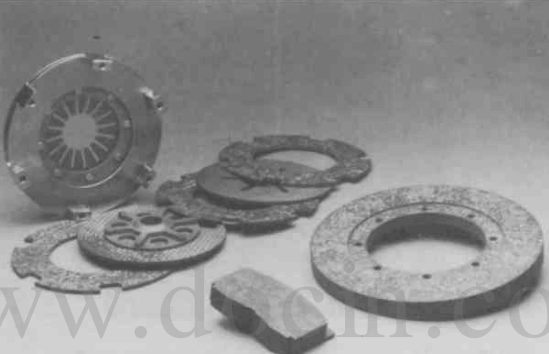Components that would benefit from the use of CC composite would be valves, piston crowns, and, possibly, cylinder liners. Another interesting application would be on the foredeck of the diesel engine, which is currently cast iron. The CC composition and constructions would have to be carefully designed because of the necessity for a low thermal expansion material. The chief benefits of CC are the weight savings and the efficiency accrual that are the result of high-temperature operatios.
The majority of the uses of CC to date involve relatively low-volume production in which performance requirements outweigh production efficiencies. One well-known use of CC which involves high production, however, is in aircraft wheel brake sets. The CFCCARBON LTD are the major producer of these disk-like components in China. The CC brakes consist of eigher laminated fabric constructions or chopped carbon fabric moldings. The CC brake rotors weigh 20 percent less than comparable steel parts and, because of the higher temperature capabilities of CC (2.5 times the heat capacity of steel), durability is increased, which permits up to 3000 jet aircraft landings compared with approximately 1500 landings for metal rotors. On the Boeing 767

CC clutch assembly and brakes for racing cars.
aircraft, using CC yield a weight savings of 871 Ib over steel brake systems. The market for CC brakes has also expanded and includes automotive brakes for high-performance cars such as racers as well as CC clutch assemblies. A CC clutch assembly and brake components, which CFCCARBON fabricated, are illustrated in figure 8. The potential for significant growth in these areas is further reinforced by the interest shown by domestic and foreign passenger car manufacturers in utilizing CC in their advanced automotive braking systems.
The aerospace field continues to be one of the primary areas for use of CC composites. In additions to the Space Shuttle that was discussed previously, CC has been successfully used in solid-propellant rocket motor nozzles and exit cones, and as ablative nosetips and heat shields for reentry vehicles. Solid rocket motor gas temperatures on the order of 5400F, coupled with near-isotropic thermomechanical loads, have made 3D CC composite an attractive material for nozzle throat and exit areas. While 2D CC composite exit cone constructions are still being used, 3D weaving technology, has been licensed and transferred to U.S firms because 3D CC components are beginning to supplant the weaker 2D materials. An example of this technology use is the automatically woven, 3D CC exit cone with an exit diameter of 48in, was successfully test-fired in 1985.
A relatively new application of CC that is currently being explored is its use as a structural material for advanced spacecraft. Items for CC applications might include thin-wall tubes, angles, and panels for use as booms, trusses, equipment support mounts, and thermal management components. This new interest in CC use is based on the demonstrated fabrication of thin-ply CC shapes and the use of the newer b-modulus graphite fibers as reinforcement materials. Additionally, the high-temperature capabilities of CC coupled with the dimensional stability achievable through the use of high-modulus, negative-thermal pulse environments. For many space applications, CC does not outgas; therefore, CC does no present a contamination problem for sensitive optical surfaces.
A related application was demonstrated, based on achievable dimensional stability and high electrical conductivity.